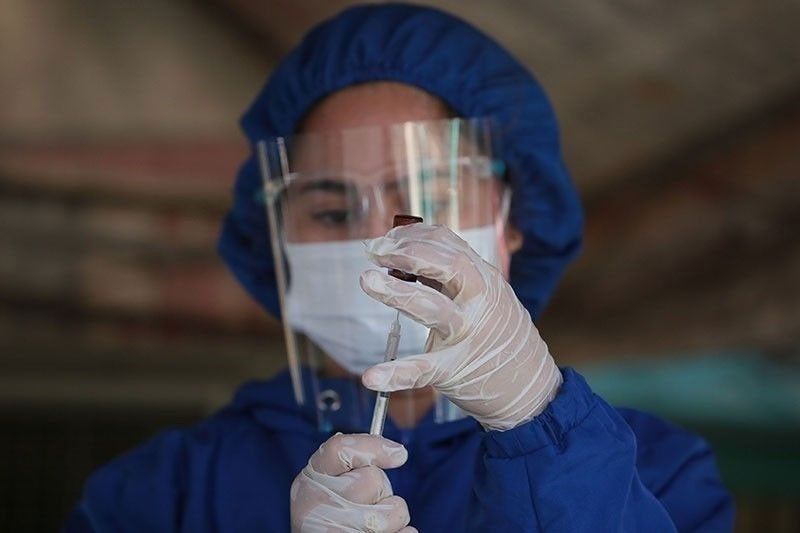Micro-herd immunity, safe spaces eyed as pandemic exit strategies

MANILA, Philippines — Experts, government officials and private sector representatives met recently to thresh out the proposed adoption of “micro-herd immunity” and “safe spaces” as strategies for the safe reopening of the economy.
GoNegosyo founder and Presidential Adviser on Entrepreneurship Joey Concepcion organized the town hall event.
The event, entitled “How to Achieve a Merry Christmas and a Better New Year 2022,” registered close to 5,000 attendees via Zoom and Facebook Live.
Concepcion explained that micro-herd immunity is achieved when more than 80 percent of the population in a closed group has been vaccinated.
Safe spaces, meanwhile, are meant to allocate separate spaces for vaccinated and unvaccinated people.
Both strategies are seen as bridging solutions that would help facilitate the reopening of the economy ahead of achieving population protection and herd immunity for the country’s entire population.
Health Secretary Francisco Duque III welcomed the suggestions, saying that the government is one with the private sector for a safe reopening of the economy.
He shared that the government’s unified strategic map to achieve the new normal is calibrated to take into account the economy, while at the same time maintain the resilience of the country’s health care system.
Concepcion believes that targeting herd immunity in smaller, controlled environments such as offices, factories or even households and communities is possible because these groups have already found ways of creating their own safe spaces. “It is possible in white-collar environments such as offices because these are closed systems and vaccine acceptance here is high,” he said.
“I believe that if we are able to vaccinate 80-plus percent of employees in a building, that means herd immunity is achieved in that group, so why don’t we increase their capacity?” Concepcion said.
“We know we have to live with COVID until we are 100 percent vaccinated,” he said. “But remaining at a standstill is something that the Philippines cannot afford to do. The Philippines has a strong balance sheet, but it may not be strong enough.”
“There are hundreds of buildings in the NCR. If we can have micro-herd immunity on that level, we can achieve herd immunity by next year and open the economy,” he added.
Ayala Land Offices president and CEO Carol Mills said that although work-from-home arrangements are convenient, there are benefits to working from the office, such as enhanced collaboration, innovation and culture-building. “Returning employees to the office will also drive consumption and economic activity. It has a multiplier effect,” she said.
“At 80 percent vaccination for an office, for example, it may be possible to raise capacity to 100 percent from the present 50 percent,” Concepcion said.
Roadmap to recovery
He believes that adopting this approach will also prepare businesses to take advantage of three factors that could further boost economic activity: Christmas spending, election spending and government stimulus.
“We need a roadmap to recovery. This is important so that consumers and business owners can confidently resume their normal activities; this will encourage banks to lend to businesses,” he said.
The approach echoes University of Santo Tomas professor and OCTA research fellow Fr. Nick Austriaco’s proposal to build herd immunity at every level of society and incentivize the groups that have achieved it.
This can increase the desire to achieve herd immunity for one’s group because “Filipinos are extremely socially conscious and sensitive, and want to be on a par with their neighbors,” he said.
Health reform advocate Tony Leachon supports the concept of safe spaces, saying “this is the way to go” but cautioned that infection rates must first go down. He also emphasized that testing and tracing must remain a priority, especially while vaccine supplies remain limited and new variants are emerging.
“There should be teams of engineers and architects to redesign buildings and ensure long-term protection of the community,” he said.
Metro Manila Development Authority chairman Benhur Abalos said there might be a need to revisit the building codes and look at policies regarding ventilation.
OCTA fellow and University of the Philippines professor Ranjit Rye agreed, saying minimum public health standards should now go beyond masks and handwashing to include the creation of safe areas where there is adequate ventilation and where people are confident that they will not catch the virus.
Salon owner and Philippine Franchise Association regional director Federico Moreno revealed that the health and wellness industry has already achieved micro-herd immunity as 90 percent of employees in the NCR are vaccinated. McDonald’s Philippines managing director Margot Torres suggested integrating the safe spaces concept with the safety seals now being issued to qualified establishments, and to include ventilation among the criteria.
The private sector also raised the need for the government to standardize vaccine cards or vaccination documentation and come up with unified guidelines.
Industry-specific concerns were also brought up, including the need for unified travel policies, the lifting of quotas for inbound travelers and the need to continue the government’s stimulus programs.
Experts pointed out during the forum that current economic data suggest a positive note for the Philippines.
Technical Advisory Group member Edsel Salvana observed that deaths per million in the Philippines are low (228) compared to the US (1,867), where vaccines are widely available. The Philippines also has a relatively low case fatality rate at 1.73, and has learned how to take care of COVID-critical patients.
Vaccinations are also gathering speed as supplies continue to arrive. Deputy chief implementer of National Policy on COVID-19 Sec. Vince Dizon said that the Philippines is now able to vaccinate as many as 300,000 people daily when supplies are available.
“We can get the doses done but what we need is the supply. The good news is, the vaccines are coming,” Dizon said.
While vaccination is important, the country needs to continue with its Prevent-Detect-Isolate-Treat strategy. “It’s the formula for success,” Dizon said.
Inter-Agency Task Force on COVID-19 co-chair Secretary Karlo Nograles said the government continues to negotiate for more vaccines. “Our economic recovery hinges on vaccines,” he said.
“We are at a crossroads,” said Concepcion. “There is light at the end of the tunnel, but micro-herd immunity is something we can do right now.”
“We cannot support an economy without people moving around, but we cannot expect people to move without ensuring their safety,” he explained. “Philippines, Inc. will survive only if we all do our part.”
- Latest
- Trending






























